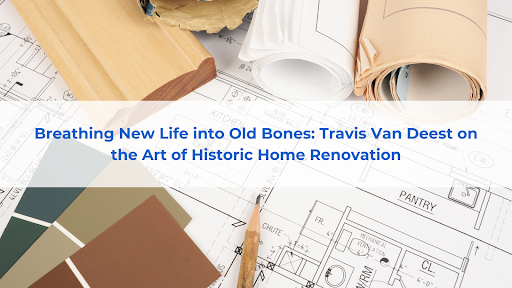
Old houses whisper stories of lives lived, and eras passed. Their weathered facades and creaky floorboards hold a charm that new construction simply can’t replicate. But renovating a historic home is a unique beast, a delicate dance between preserving the past and embracing the present. Based in central Ohio, Travis Van Deest, a seasoned expert in historic home renovation, understands this balance intimately. With years of experience, he’s mastered bringing these timeworn structures back to life while honoring their inherent character.
“It’s about understanding the soul of the house,” Van Deest explains. “You’re not just renovating a building; you’re preserving a piece of history.” This philosophy guides his approach, from the initial assessment to the final finishing touches.
Van Deest emphasizes the importance of thorough research before embarking on any renovation project. Delving into historical archives, old photographs, and even original blueprints can reveal valuable insights into the home’s original design and construction. This knowledge is crucial for making informed decisions that respect the home’s historical integrity.
“You have to be a detective,” he says with a smile. “Uncovering the hidden layers of a house is like peeling back time. You never know what treasures you might find.” These “treasures” range from original hardwood floors hidden beneath carpet layers to intricate plasterwork concealed behind drywall.
One of the biggest challenges in historic home renovation is finding the right balance between preservation and modernization. While updating plumbing, electrical systems, and insulation is essential for comfortable modern living, it’s crucial to do so without compromising the home’s historic fabric.
Van Deest advocates for a “gentle touch” approach. “Whenever possible, we try to preserve and restore original features,” he explains. “If a window is beyond repair, we’ll replicate it using traditional methods and materials. It’s about maintaining the authenticity of the house.”
This commitment to authenticity extends to the selection of materials. Van Deest often sources reclaimed lumber, antique hardware, and period-appropriate fixtures to ensure a seamless blend of old and new. “It’s about creating a cohesive narrative,” he says. “Every element should contribute to the overall story of the house.”
Sustainability is another key consideration for Van Deest. “Historic homes are inherently sustainable,” he notes. “They were built to last using durable materials and time-tested techniques.” He encourages homeowners to embrace eco-friendly practices, such as using low-VOC paints, installing energy-efficient appliances, and repurposing salvaged materials whenever possible.
Beyond the structural aspects, Van Deest recognizes people’s emotional connection with their homes. “These houses hold memories,” he says. “It’s important to be sensitive to that and to involve the homeowners in the process.” He believes collaboration is critical to a successful renovation, fostering open communication and mutual respect between the homeowner, architect, and contractor.
For Van Deest, the most rewarding part of his job is witnessing the transformation of a neglected old house into a vibrant, cherished home. “Seeing the joy on the homeowners’ faces when they see their restored home is priceless,” he says. “It’s a privilege to be a part of that process.”
Travis Van Deest’s expertise in historic home renovation is a testament to his passion for preserving the past and creating spaces that honor history while embracing modern living. His dedication to authenticity, sustainability, and collaboration ensures that these timeworn treasures will stand tall for generations to come.




















